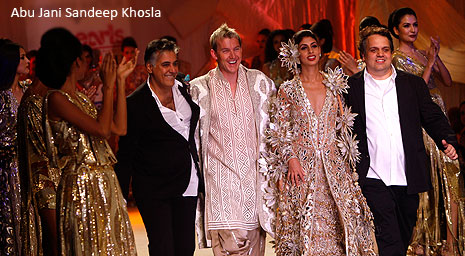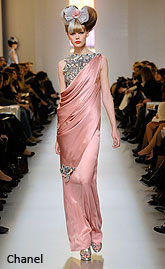 In about a few weeks from now fashion in the capital will get hauter! As Delhi Couture Week is all set for its second edition this year, we analyze the importance of a couture week among various other fashion weeks that keep our designers busy round the year. But if you are yawning at the thought of attending just another fashion week, well then take Fashionfad’s crash course.
In about a few weeks from now fashion in the capital will get hauter! As Delhi Couture Week is all set for its second edition this year, we analyze the importance of a couture week among various other fashion weeks that keep our designers busy round the year. But if you are yawning at the thought of attending just another fashion week, well then take Fashionfad’s crash course.
HAUTE COUTURE DECODED
French for “high sewing” or “high dressmaking”, Haute Couture refers to the creation of exclusive custom-fitted garments. It is made-to-order for each customer, and it’s created from expensive and high-quality fabric which is sewn with extreme attention to detail and finished by the most experienced and capable seamstresses, often using hand-executed techniques.
COUTURE, SACRED IN FRANCE
In modern France, the term Haute Couture is protected by law and is defined by the Chambre de commerce et d’industrie de Paris. Their rules state that only “those companies mentioned on the list drawn up each year by a commission domiciled at the Ministry for Industry are entitled to avail themselves” of the label Haute Couture. The Ministry for Industry of France gives the liberty to use the Haute Couture label only to those designers who can deliver custom-made clothes to clients, own a designer workshop with at least 15 employees and showcase collections in front of the press at least twice a year.

‘HAUTE COUTURE’ IN INDIA
Now that you are well versed with the Western sensibilities of Haute Couture, let us now examine what does this term mean in India. Though the Ministry for Industry in Paris has given this prestigious status/label to only 10 couturiers, FDCI gave us 13 in the first edition of Delhi Couture Week.
While couture in India is still essentially bridal wear, Indian fashion is progressing towards evening wear, festive fashion and the likes. Designer Suneet Varma, who showed a spectacular collection at the Delhi Couture Week last year, had said that every woman who buys some brocade and matches it with a saree, and then hands it over to a tailor, is actually getting a custom-made dress for herself, which is what couture is all about. He defines Indian couture as “Indian textiles, silhouettes and embroidery with a twist. Everybody has good sarees in their wardrobes but handing out style tips, thinking out-of-the-box is all part of couture. I showed 10 sarees on the ramp, each one of them draped differently, one as a toga, other as a sarong, etc, bringing a Western sensibility in a traditional Indian garment.”

While JJ Vallaya, another king of couture says, “I started my career with couture and it gives me a deep sense of satisfaction to design individual style. Although, the perfection of West cannot be denied, India still holds its own when it comes to couture with its legacy of rich craft and deep sense of history.” Vallaya adds, “Couture shows give designers an opportunity to tell a grand story.” At last year’s Delhi Couture Week, JJ Vallaya’s collection was the story of a fictitious courtesan, and the show revolved around a dream of hers, where she goes through a series of emotions.
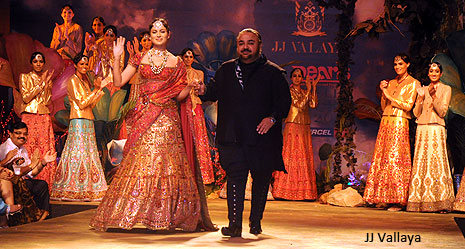
Designer Reynu Taandon feels that a couture collection is as important for designers as their prêt line. “Couture collection caters more to national buyers. So the way prêt-line designers have the Wills Lifestyle Fashion Week as a platform to show their creativity, which is also very important to establish our hold in the international market, Delhi Couture Week brings us closer to our domestic buyers,” says Reynu.
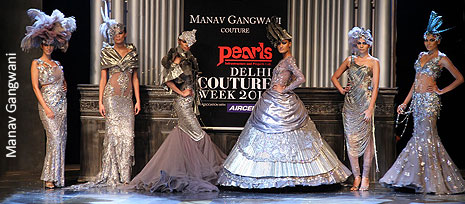
Designer Puneet Nanda of Satya Paul thinks that couture is an exclusive art of clothing. He adds, “Couture boutiques are high-end boutiques that tender mostly branded items and whose customers too belong to the upper stratum of the society.” While designer Tarun Tahiliani explains the significance of couture in a whole new way. “The entire world views the Indian wedding as a spectacle that is unparallel to any other culture. While the choice of how these should be celebrated remains individual, this experience means culture, textile, jewellery, tradition, and modernity in a synergistic blend that is relevant for today’s lifestyle. As clothes play an important part, the exclusive collections showcased have been designed to be utterly luxurious, exquisite and delicate in workmanship and details,” Tarun had said in an interview.
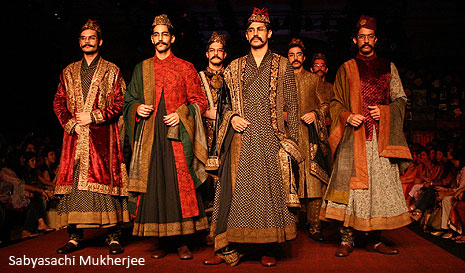
The audience at couture weeks in India comprises of buyers (both domestic and foreign), celebrities and socialites, and there is no doubt that Couture Weeks are gaining momentum in India as a platform for spreading awareness and for trading in both international and national. According to designer Neeta Lulla, “Such Couture Weeks help greatly in terms of sales as the client base is largely brides-to-be and their family and friends, who are keen on buying heavy embellished Indian couture garments. Therefore, couture weeks play a very crucial role in creating awareness amongst buyers about the latest line for a couture designer.”

INDIAN COUTURE’S INTERNATIONAL APPEAL
As we know that the West is quite obsessed (if we may use this word!) with everything Indian, how could Indian couture be left behind. Over the years we have seen many international celebrities donning traditional Indian clothes custom-made depicting their sensibilities. We have seen Princess Diana wearing a beautiful salwar-kameez by Ritu Kumar back in the ’90s, Elizabeth Hurley wearing a Tarun Tahiliani saree at her wedding to Arun Nayar along with many more celebrities sporting Indian attire, which only proves further that Indian couture is a hit abroad. Even cricketer Brett Lee walked the ramp in a churidar kurta pyjama with an embellished sherwani by Abu Jani and Sandeep Khosla at last year’s Delhi Couture Week.
